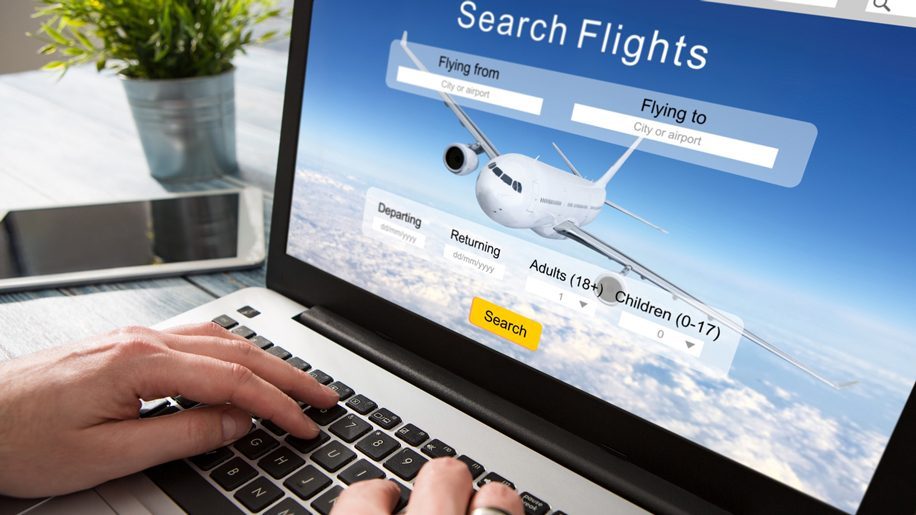RIO DE JANEIRO, BRAZIL – Faced with a pandemic that has left the airline industry virtually inoperative and has imposed severe social distancing measures, flight searches on Google have reached an all-time low in Brazil.

The data were compiled by Broadcast (a real-time news system) using the Google Trends tool. The numbers show that the sector’s rebound from the passengers’ perspective has not yet started in the country, but at least it has stopped dropping. Conversely, the global market is showing signs that the worst is over and people are starting to resume interest.
According to Google data, the search for airline tickets in Brazil has reached its lowest level since record-keeping began in 2004. Interest dropped 81 percent between February and April (from 91 to 17), but stabilized in May.
The metric used by Google is that a score of 100 represents the peak popularity of a term in a given region. A score of zero implies that there was insufficient data for the search.
The global data shows a 30 percent rebound in May compared to April – the latter also the worst in the historical search engine series (26). On Wednesday, the International Air Transport Association (IATA) pointed out a set of data, as well as the improvement in Google searches for tickets, as a light at the end of the tunnel.
According to IATA’s chief economist Brian Pearce, the sector showed a rebound in the number of flights (also considering cargo transport) in May. “We saw a 30 percent increase on May 27th compared to April 21st, which proved to be the lowest point in the crisis in terms of flights. This suggests that the month of May was also better for passengers,” he said during a press conference.
The economist stressed the trend of resuming business through the domestic market. “The airlines are striving to boost demand, with ticket offers,” he said. According to data from IATA, domestic market airfares in May were 23 percent lower in the annual comparison.
However, the crisis will still have a heavy cost. Global demand for flights (measured in RPK, or Revenue Passenger Kilometers) plummeted 94 percent in April compared to the same month in 2019. “The industry reached an unprecedented level in April,” Pearce said. The supply of seats (measured by Available Seat Kilometres, or ASK) that month dropped 87 percent in the annual comparison. The occupancy rate reached an all-time low of 36.6 percent. In the same period of 2019, the indicator was 83 percent.
According to attorney Ricardo Fenelon, an attorney specializing in aviation law, Brazil’s low rebound so far is due to the time gap in Latin America when the pandemic hit. While China and Europe are showing signs of a rebound and a drop in contamination, Brazil has been recording a daily growth of infection rates and now ranks second in the world in the number of Covid-19 cases.
Fenelon stressed that Brazil managed to take significant steps to protect the airline industry at the start of the pandemic. “Ryanair, which in 2019 alone carried more passengers than all Brazilian airlines, has stopped. And here we managed to continue”.
In 2019, local airlines carried 104.4 million passengers. The low-cost Irish company Ryanair alone carried 142 million. The government’s challenge now, he adds, is in what he called the second stage, with a credit line. “I am very concerned about how the government will proceed to prevent the sector from collapsing,” he said, noting that the BNDES (National Bank for Economic and Social Development) and Ministries have been working hard.
In addition to this time gap, another factor that has compromised Brazilians’ interest in travel is the political crisis the country is facing, says Paula Faria, founder of Airport Infra Expo and CEO of Necta. “We are struggling to anticipate this future. Not traveling is a reflection of this insecurity that is related to the duality between the spheres (federal, municipal, and state). As we don’t have such a direction, people won’t travel”, she said.

Restarting
After the April storm, Brazilian airlines began to restart their operations. As a means of ensuring that the crisis would not affect cargo transportation and average staff on airplanes, the government took special measures for the segment. “At the start of April, when the crisis began here, our lowest point was 180 flights a day, from an average of up to 2,700 during the peak period of the summer season,” said Eduardo Sanovicz, president of the Brazilian Airline Association (ABEAR).
On the turn of May to June, the sector started operating with 263 daily flights. The estimate for the end of the month is 353 daily flights. “That number is already growing at the start of July, with the restart of [regional carriers] Passaredo and Map,” he added.
After the greatest crisis in its history, aviation will face a major challenge. Sanovicz said that for Brazil, the main focus is on the exchange rate (the dollar stands at around R$5.1 and the US currency influences 50 percent of airline costs) and passengers’ habits in the restart. He also said clients will start considering issues such as health insurance coverage and medical assistance in the cities they plan to go to. “Resumption will occur first in the domestic market, with trips of up to two and a half hours. Because by doing so, if a passenger should feel uncomfortable, he/she can come back,” he highlighted.
Azul announced it will increase the number of flights in June to 168 daily take-offs on peak days, compared to an average of 115 daily take-offs in May. In June, Gol will have an average of 100 daily flights, compared to the 68 planned in May, which represents an increase of 47 percent. Latam is flying in Brazil during the same month with about seven percent of its pre-pandemic capacity (750), with an average of 50 flights per day.
Source: Estadão Conteúdo

